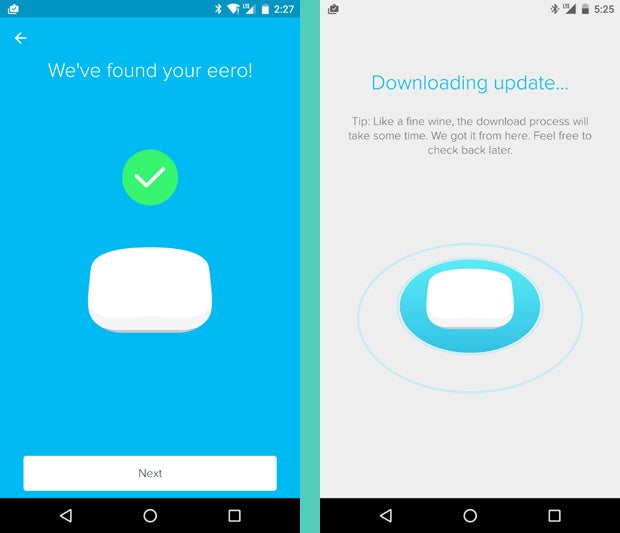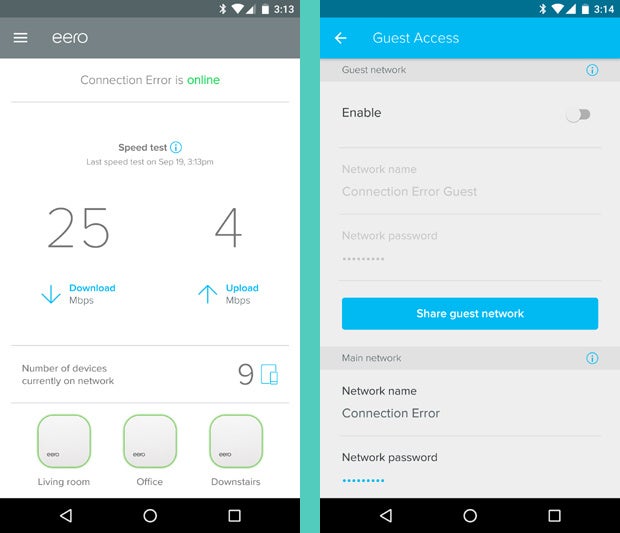I thought I had it all figured out.
My wife and I were getting ready to move into a new house, you see. We were stepping up to something a little larger, and that'd mean I'd finally have a home office with a little distance from the toddler shrieking zoo we currently operate in our home.
As you can imagine, having an office that isn't in the middle of such a high-decibel exhibition carried an awful lot of appeal. Love my 19-month-old as I do, her lack of a built-in volume control (an odd feature to omit, if you ask me) makes her a difficult match for all those work hours I stubbornly insist on maintaining.
That's why everything seemed peachy when we found a right-feeling place with a nice walkout basement -- the perfect spot for my humble home office. Or so I thought.
The unforeseen issue, as you may have guessed, was reliable internet access -- or lack thereof. I clumsily assumed I'd be able to put a hardwire Ethernet port into my new sitting station, ensuring I'd have top-notch speeds despite being a floor beneath the router. Long story short, I was wrong.
So here I was, sitting in my splendid new typing chambers, with internet access a fraction of the (already less than exceptional) speed I should have been getting. Oof.
Luckily, I remembered a review I had read a few months earlier -- a story about a device that'd prove to be my home Wi-Fi hero.
Getting to know Eero
The device is called Eero (named, interestingly, after architect Eero Saarinen -- who designed the elementary school of the company's CEO as well as more prominent projects like the St. Louis Arch).
Eero creates what's called a "wireless mesh network" in my house -- a chain of small routers that connect with each other and spread the Wi-Fi signal all over the place. Each router is an unassuming white box that looks vaguely like an Apple TV unit. The first one plugs into my modem in the living room upstairs; the next sits on a ledge at the bottom of the stairway; and the last sits all the way across the basement, right next to the desk in my office.
Notably, this is a similar sort of system to one that Google is expected to unveil at its upcoming hardware event on October 4. And man, can it be effective.
Sitting here in my office, I'm now getting speeds that are actually faster than what I got while sitting right in front of my old AT&T-issued router before -- around 25 to 30 Mbps down, on average, on a plan that provides speeds "up to 24 Mbps" (the best we can get here). Before the system was in place, I was getting speeds in the lower-single digits downstairs -- low enough to be barely usable and a serious roadblock to productivity (not to mention procrastination, which is an equally important part of my day).
The magic of mesh
If you read this column regularly, you know that I tend to range from "skeptical" to "surly" when it comes to new tech features and products. I won't deny it: I've been watching this field long enough to become a teensy bit jaded, especially when it comes to overblown claims of magical, life-changing, retina-engorging things. I'm not easily impressed, and I think that's an important quality to have if you want to navigate the maze of never-ending tech innovations and remain somewhat sane.
So let's be clear: I don't say it lightly when I tell you that this system has absolutely blown me away. It's been like a (dare I say) magical solution for a seemingly unsolvable challenge -- a way to effectively have a supercharged router in every room of our house, regardless of where the nearest hardware actually resides. The signal and speed are consistently strong, no matter where we go.
The only downside? It ain't cheap. Eero runs about 500 bucks for the full three-box kit, which is what the company recommends for most homes ("small homes," apartments, and studios may be able to get away with less).
You don't have to tell me that that's a lot of dough; believe you me, I had the conversation plenty when mulling over whether this sort of thing was a worthwhile purchase. But fast internet access is basically a mandatory utility for most of us these days, even when it isn't an occupational requirement. And if you live in a home where you need said access on multiple levels or across an extended area, your options are pretty limited.
Sure, there are simple and less expensive "range extenders" for Wi-Fi routers, but they (ironically) don't tend to offer much in the way of actual range. And there are other mesh network systems beyond just Eero, but most of the alternatives thus far seem uglier (remember, these boxes are going to be visible all throughout your home), less versatile, and more difficult to set up and deal with over time.
Eero's app actually feels almost Googley in its simplicity and whimsical nature -- a funny comparison to make, of course, given that Google itself may soon be a direct competitor. The initial setup was dead-simple and almost even amusing. It took me about five to 10 minutes total to finish.
Since then, the system has pretty much just run itself. It even gets regular automatic software updates with new features and security patches -- something that's almost unheard of in the world of routers. It's nothing you have to think about or concern yourself with unless you're interested, but it's reassuring to know it's happening regardless.

Software that doesn't make you want to gouge your eyes out is always a plus in my book -- especially when it comes to something headache-inducing like a router
The app, meanwhile, serves as an easy way to check your network status and speeds, see what devices are connected, and perform a variety of advanced functions -- everything from messing with network settings to creating temporary "guest networks" and establishing profiles to control precisely when and how often different members of your family can get online (mental bookmark on that for future use...).

Yes, that's actually my network name. It slays me every time
It's the type of tech innovation that actually changes things and improves life in a meaningful way -- and that, my friends, is what gets me excited. This feels like the first meaningful "disruption" we've seen in the field of home Wi-Fi, and if you ask me, it's a disruption that's long overdue.
As a company that wants everyone to be online everywhere, it's no wonder Google might want to follow suit. The biggest question is what more it can bring to the table -- because the disruption itself is already well underway. And as I've discovered during my first month with Eero, the bar has been set impressively high.







